Market Surges As New Bull Market Begins?

Inside This Week’s Bull Bear Report
- Market Surges As New Bull Market Begins?
- How We Are Trading It
- Weekly Market Recap W/ Adam Taggart
- Stock Of The Week
- Daily Commentary Bits
- Market Statistics
- Stock Screens
- Portfolio Trades This Week
Market Surges As New Bull Market Begins?
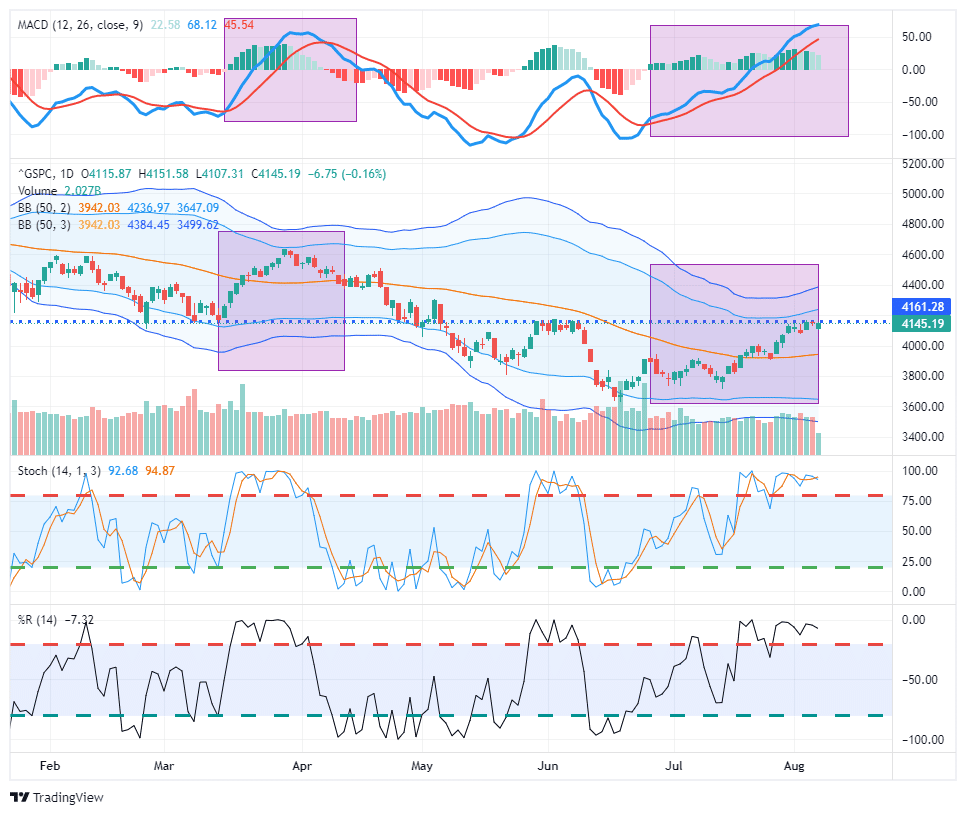
Despite the Fed hiking rates, shrinking their balance sheet, and inflation at 9%, much of the financial media and market gurus have determined that the bear market is over and a new bull market has started. As shown, as the market surged, so did the number of articles discussing a new bull market.
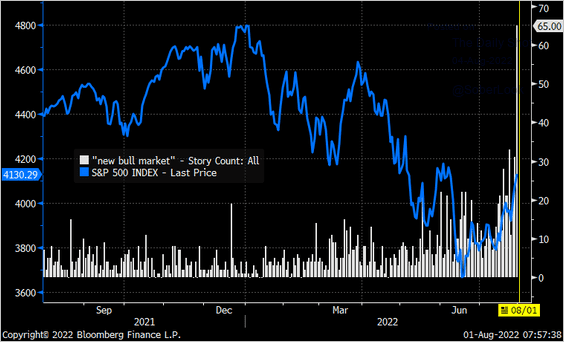
The previous extreme pessimism levels formed the perfect foundation for a strong bull market rally. Notably, those more extreme levels of bearishness are rapidly turning bullish. The chart below is a composite of both professional and retail investor sentiment.
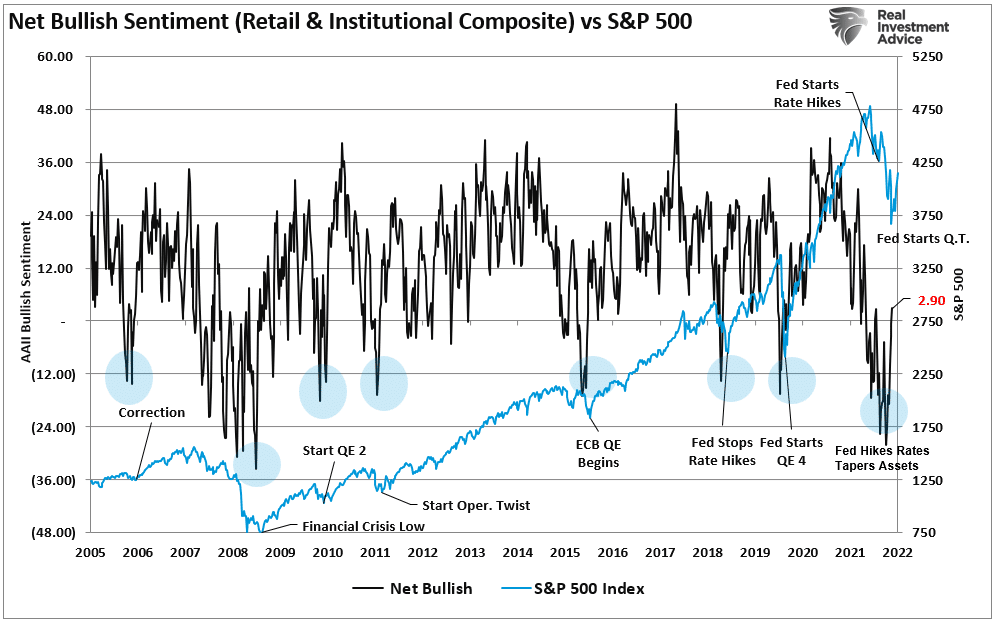
Bull Rally Has Some Legs
The question becomes sustainability. To that end, some indicators currently support the view of a more sustainable bull market. To wit:
“With a continued rise last week, more than three out of every four stocks in the index recovered above their 50-day moving averages, the most since the beginning of the year. The other two times in the past five years, when this cycled from fewer than 5% of stocks to more than 75%, it coincided with the kick-off to sustained rises.” – Sentiment Trader
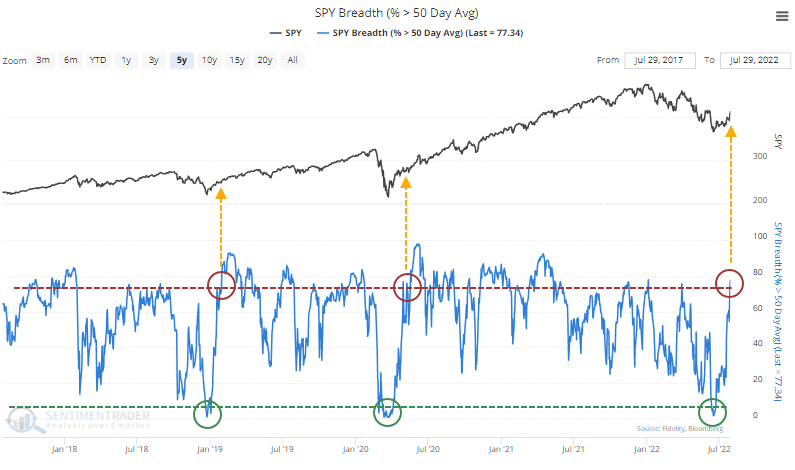
Furthermore, the McClellan Summation Index is also denoting a more healthy market which has historically led to more gains.
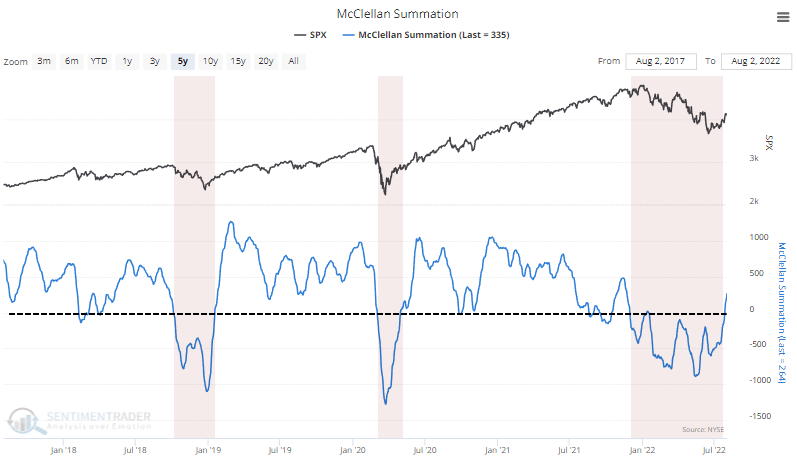
As Sentiment Trader concludes:
“The setup was ripe for at least a bear market rally in late June. Sentiment was about as bad as it gets, for as long as it gets before dip-buyers tend to step in. And they did, aggressively. That triggered some thrust-y signals a month ago, and unlike others over the past six months, buyers persisted and triggered even more compelling signals. It’s another sign that this recovery should have legs.”
We agree this market surge could have some legs as the short- to intermediate-term time frame is bullish and does warrant increased equity exposure. However, such does not mean there won’t be some pullbacks along the way, as the market is very overbought short-term. Such pullbacks will provide opportunities to increase exposure.
However, there is a difference this time.
There Is A Difference This Time
“The four most dangerous words in investing are ‘this time is different.'” – Sir John Templeton
While I agree with Sir Templeton, there is a difference with the market that has not existed in the last 40 years. That difference is inflation.
When examining the technical underpinnings of the market, mainly since the turn of the century, the influence of monetary policy’s “invisible hand” is evident. Market corrections, and bear markets, were bailed out by monetary interventions, zero interest rate policies, and meager inflation. Not since the ’70s have we witnessed a market where the Fed tightens monetary accommodation and increases rates to combat high inflation. The chart below is a reminder of what happened then.
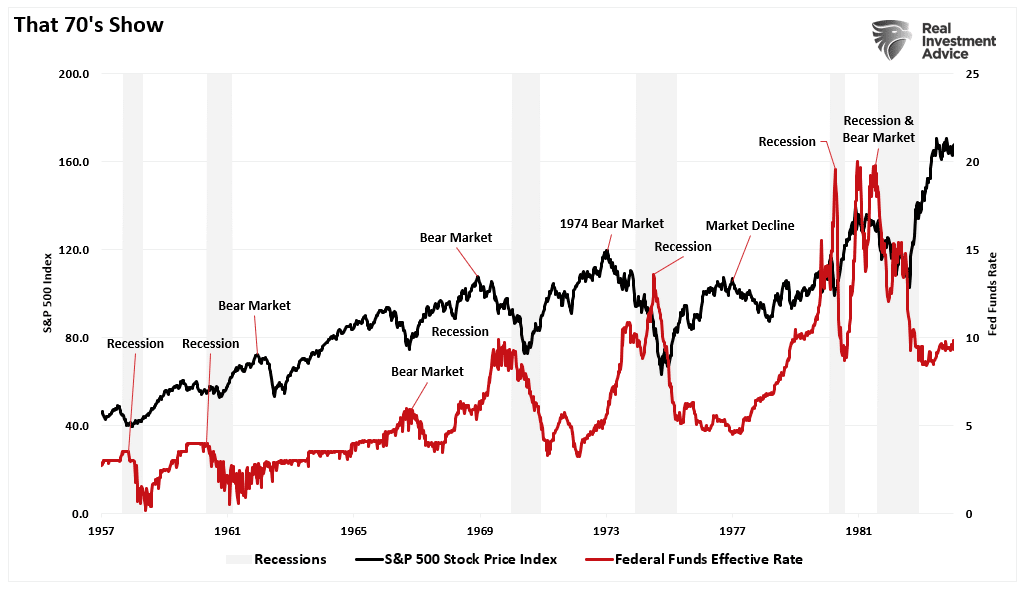
While the past doesn’t necessarily predict the future, this is the only period we have to refer to when the Federal Reserve aggressively tightened interest rates. There are also some other significant differences.
In the 60s and 70s:
- Household Debt To Net Worth Ratios were roughly 60% vs. more than 140% today
- Valuations were 7x earnings in 1974 vs. 25x earnings today.
- Dividend yields were 5% vs. 2%
- Economic growth was averaging 7-8% vs. 2%.
These more fundamental factors don’t carry much weight short term; however, longer-term, they suggest households today are much less able to navigate tighter financial conditions. Such will ultimately weigh on earnings growth and margins.
No Stress For The Fed
As noted in Friday’s Macroview, the market is giving the Federal Reserve plenty of leeway to combat inflation.
“There are currently NO signs of financial stress, much less [financial] instability. From the Federal Reserve’s perspective, despite the decline in asset markets in 2022, investors are still 23% higher than at the market’s peak in 2022. Absent a disorderly meltdown; the Fed will remain focused on stocks being still above their pre-crisis peak. As BofA notes:
‘Since in a typical consumption model, households react to sustained changes in prices over a period of three years or so, the Fed is convinced the wealth effect is still positive.‘”
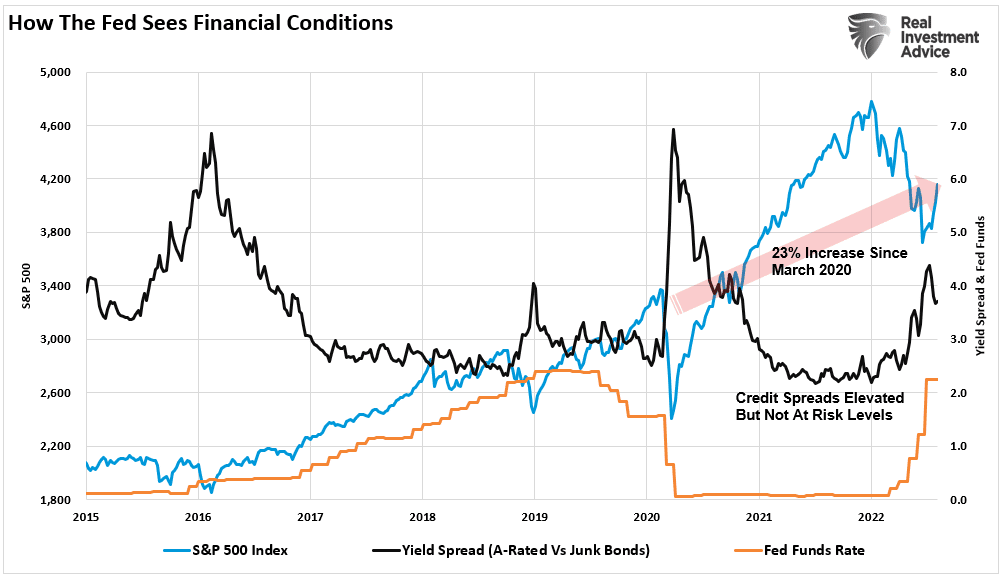
Secondly, while credit spreads have risen, they remain controlled, suggesting that financial stress in the credit markets remains low.
While market bulls are chasing stocks in hopes of a “Fed pivot,” with few signs of financial or credit market stress, the Fed can remain focused on combating inflation.
As the Fed continues to hike rates, there is an increasing risk that “orderly” markets rapidly become “disorderly.” Such will be due to the realization that the Fed has made a mistake and overtightened policy, and the “soft landing” scenario dissipates.
Such suggests that we continue to treat the current market surge as a “bear market rally” until we have compelling confirmation the bull market is back.
Not Getting The Bull Bear Report Each Week In Your Mailbox? Subscribe Here For Free.
How We Are Trading It
As noted last week, the current market environment remains very challenging. Such continued this week as a strong employment report rattled “pivot” hopes. There are certainly plenty of reasons to be more bullish in the short term. However, there is a compelling bearish case given the Federal Reserve’s focus on combatting inflation.
As such, we recently added some exposure to take advantage of the rally; but took profits on those trades. With the market extremely overbought short-term, some corrective action is needed to add additional exposure currently. We will most likely take advantage of any opportunity where the 50-dma is tested and holds as new support.
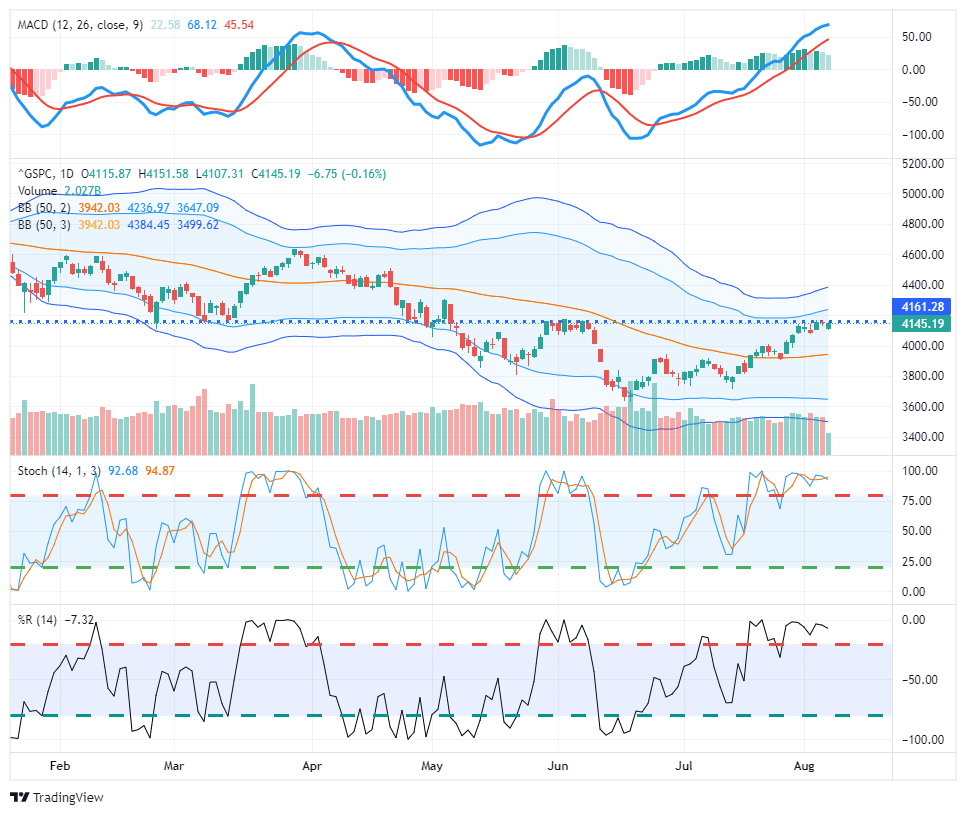
Another opportunity we are watching is the 10-year treasury bond. Our long-term portfolio hedge has markedly improved in recent weeks and is close to completing an “inverse head and shoulders” pattern, which argues for high bond prices and lower yields. Such would result from tighter monetary policy and increased signs of slower economic growth and disinflation.
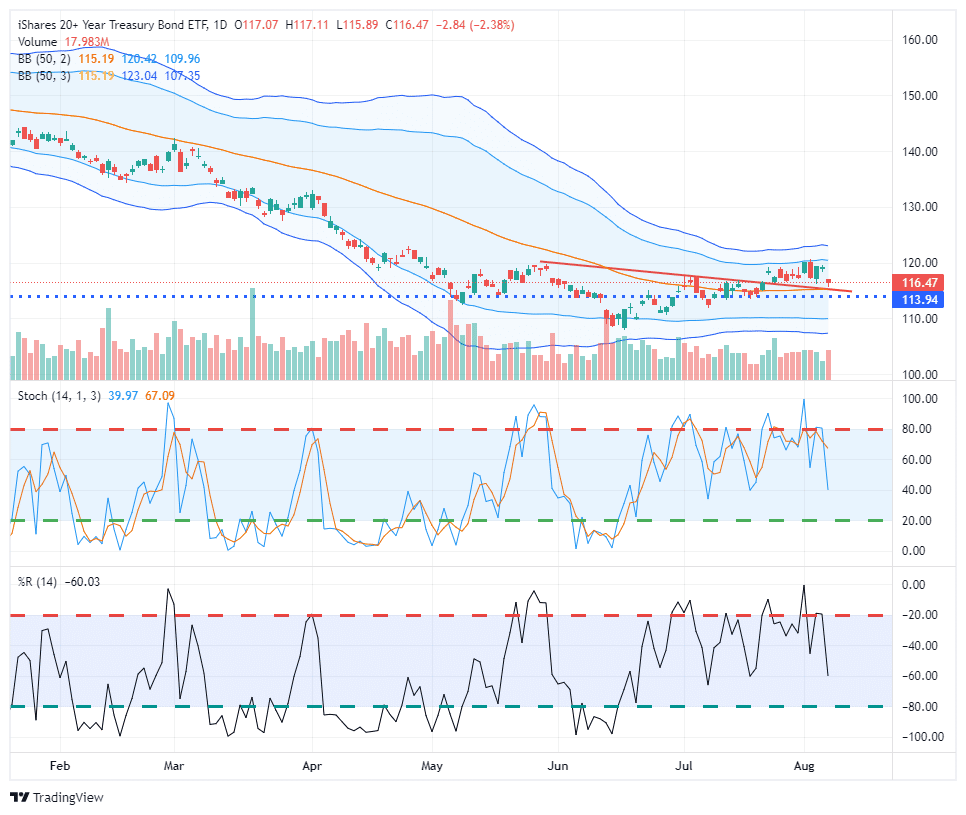
We remain cautious with a substantial holding in cash. Opportunistically, we are looking to increase our trading equity longs and build into our long-bond holdings for a potential recession next year.

As the market surges, we recommend following basic risk management protocols given the wide range of potential outcomes and no clear direction for markets.
- Re-evaluate overall portfolio exposures.
- Raise cash as needed. (Cash is a risk-free portfolio hedge)
- Review all positions (Sell losers/trim winners)
- Look for opportunities in other markets and assets.
- Add hedges to portfolios.
- Trade opportunistically.
- Drastically tighten up stop losses.
If the bulls are correct, removing hedges and increasing equity risk is simple.
However, if this is just a “bear market rally,” a more conservative portfolio will protect capital during the subsequent decline.
Need Help With Your Investing Strategy?
Are you looking for complete financial, insurance, and estate planning? Need a risk-managed portfolio management strategy to grow and protect your savings? Whatever your needs are, we are here to help.

Weekly Market Recap With Adam Taggart
Stock Of The Week In Review
In the Bull Bear Report, we will post one of the stocks from our research at SimpleVisor to find stocks worth taking a deeper look into. The 5-For-Friday report is published each week in full for SimpleVisor.com subscribers.
This week’s scan looks for five stocks not well followed by Wall Street but whose share prices have had a great year. Within this group, we look for robust growth opportunities with strong earnings estimates and a high Zacks Rank.
While the companies in this scan have had an impressive run this year, they may offer additional upside if analysts take notice of their stock price performance and earnings potential and initiate coverage. Doing so would make these stocks visible to a much larger population of investors.
Screening Criteria
- ROE TTM > 10%
- 1yr and 2yr EPS Estimate > 20%
- P/E < 25
- YTD Price Change > 10%
- Zacks Rank 1 or 2
- # of Brokers/analysts Following = 1
Let’s take a look at one of them. (Click the image to enlarge)
CBIZ, Inc. (CBZ)
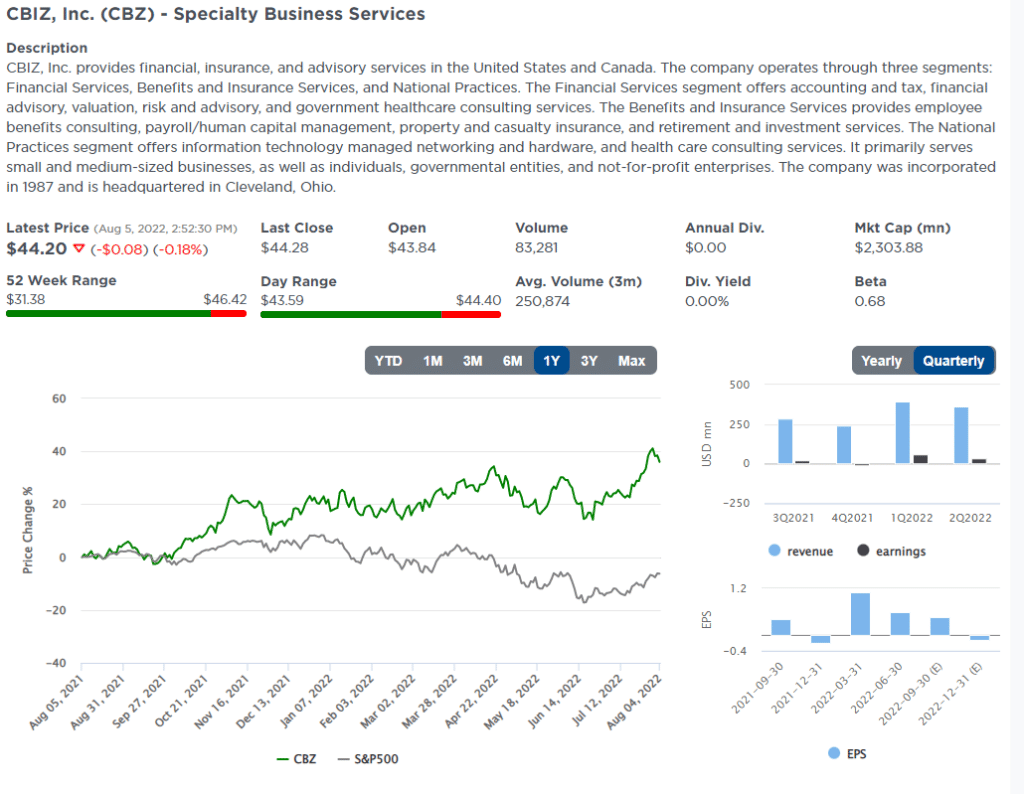
Login to Simplevisor.com to read the full 5-For-Friday report.
Daily Commentary Bits
Gold Is Rising As Real Yields Fall
Gold prices have spiked by $85/ounce in just two weeks. Why? Some claim a recent increase in inflation expectations is driving gold higher. That is partially true. However, it doesn’t tell the whole story. The reality is that real yields are falling, which is driving gold higher. Real yields, which are inversely correlated with gold prices, are the difference between nominal yields and inflation expectations. Over the last two weeks, real yields have fallen by 53bps as inflation expectations rose by 18bps and nominal yields fell by 35bps. Real yields inversely correlate with gold prices because they best describe the Fed’s influence on markets. When the Fed is dovish or believed to be in the future, real yields fall and often go negative.
The market is starting to price in a Fed stall and pivot. Accordingly, investors believe the Fed is shifting from a hawkish to a dovish stance. As a result, real yields are falling, and gold is rising, as shown in the yellow box below. The outlook for gold may not be bullish if bond investors start fretting that a dovish Fed will fuel more inflation and push nominal yields higher to catch up with the recent increase in inflation expectations.
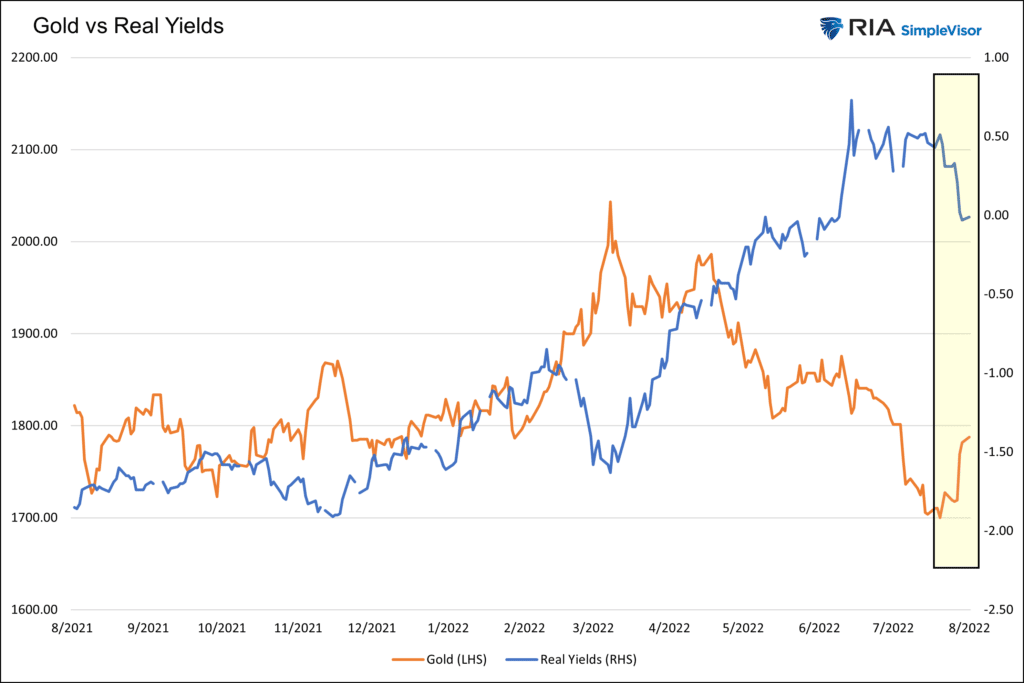
Click Here To Read The Latest Daily Market Commentary (Subscribe For Pre-Market Email)
Bull Bear Report Market Statistics & Screens
SimpleVisor S&P 500 Breadth Measures
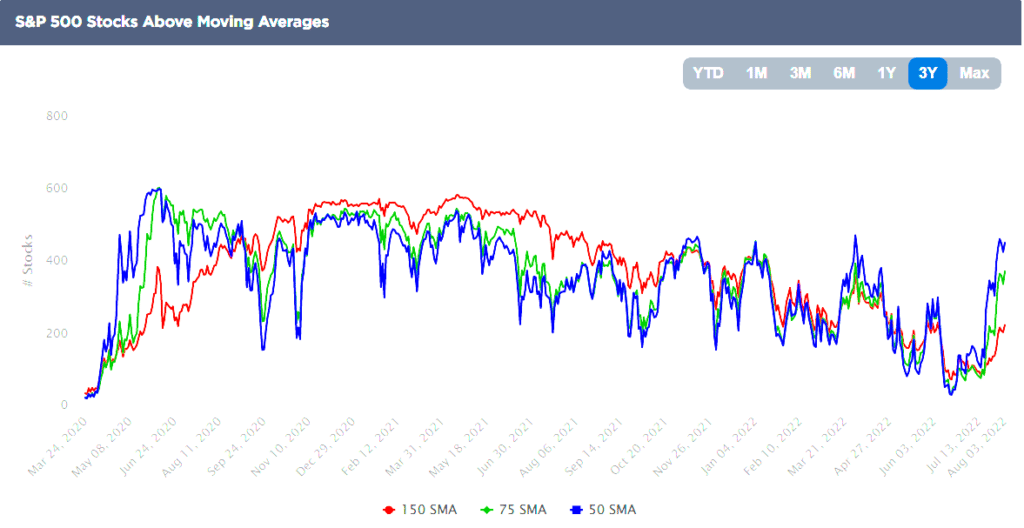

SimpleVisor Sentiment Index
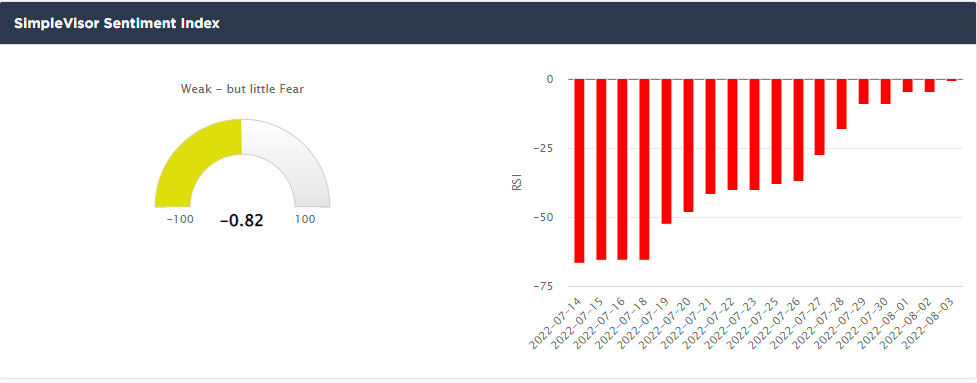
Relative Performance Analysis
The market surge pushed most sectors into more overbought territory except for Energy and Bonds, which had decent corrections last week. As is usually the case, this analysis indicates the market has likely extracted most of the rally, so taking profits in overbought areas and looking to buy oversold tends to remain a profitable strategy.
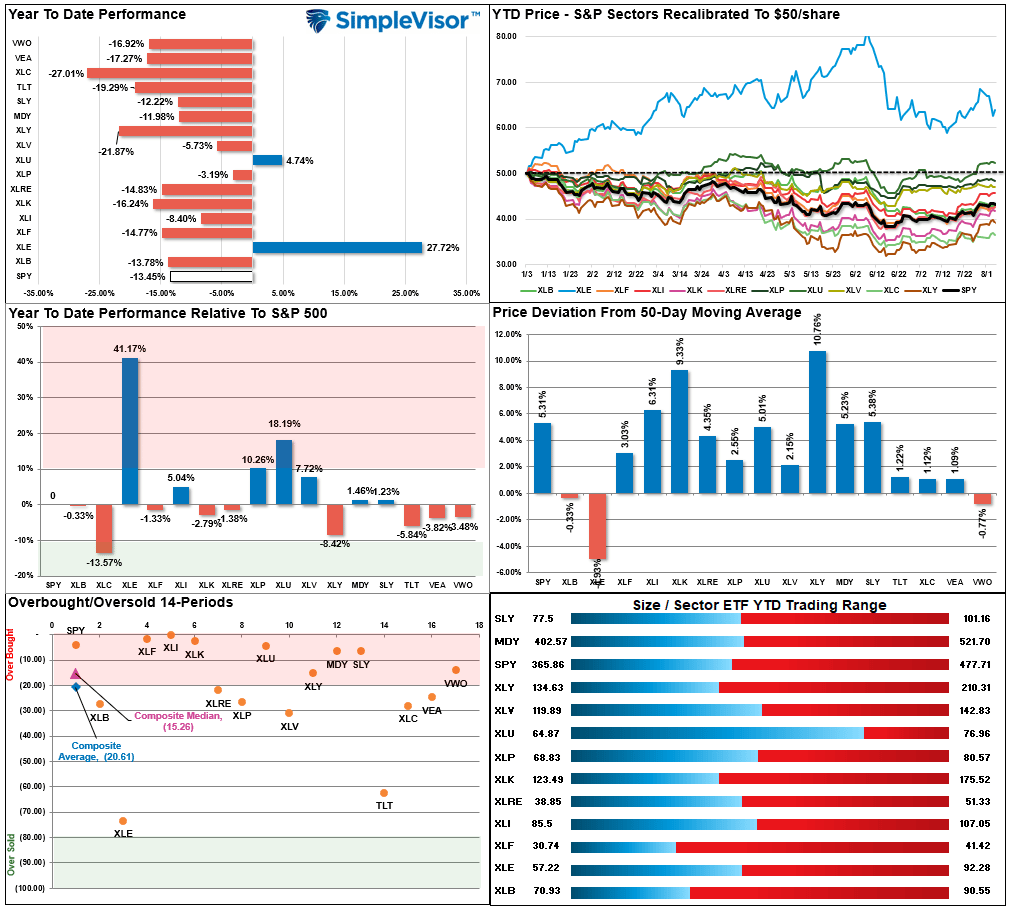
Technical Composite
The technical overbought/sold gauge comprises several price indicators (RSI, Williams %R, etc.), measured using “weekly” closing price data. Readings above “80” are considered overbought, and below “20” are oversold. Markets tend to peak when readings are at 80 or above, which suggests profit taking and risk management are prudent. The best buying opportunities are when readings are 20 or below.
The current reading is 64.74 out of a possible 100 and rising. Remain long equities for now.
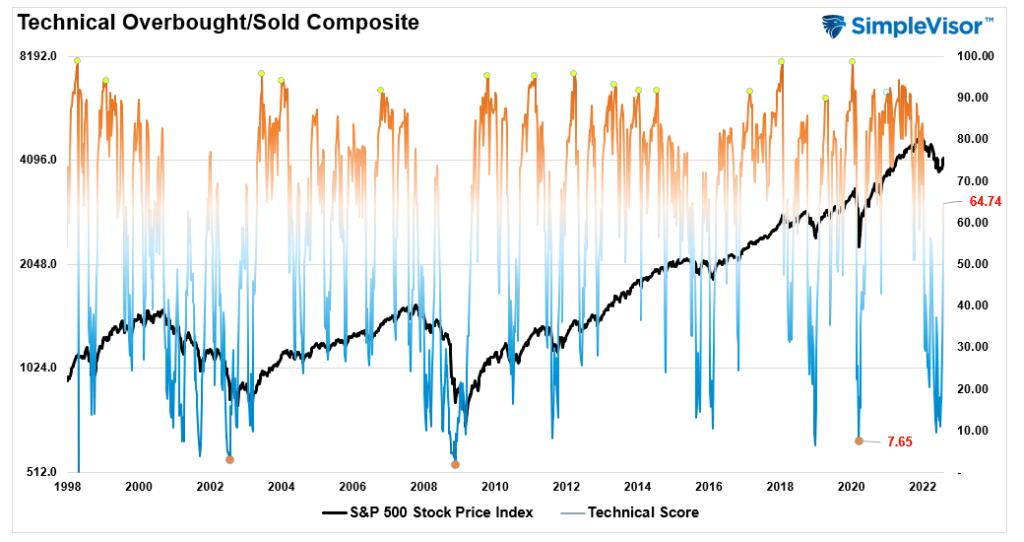
Portfolio Positioning “Fear / Greed” Gauge
The “Fear/Greed” gauge is how individual and professional investors are “positioning” themselves in the market based on their equity exposure. From a contrarian position, the higher the allocation to equities, to more likely the market is closer to a correction than not. The gauge uses weekly closing data.
NOTE: The Fear/Greed Index measures risk from 0 to 100. It is a rarity that it reaches levels above 90. The current reading is 54.54 out of a possible 100.
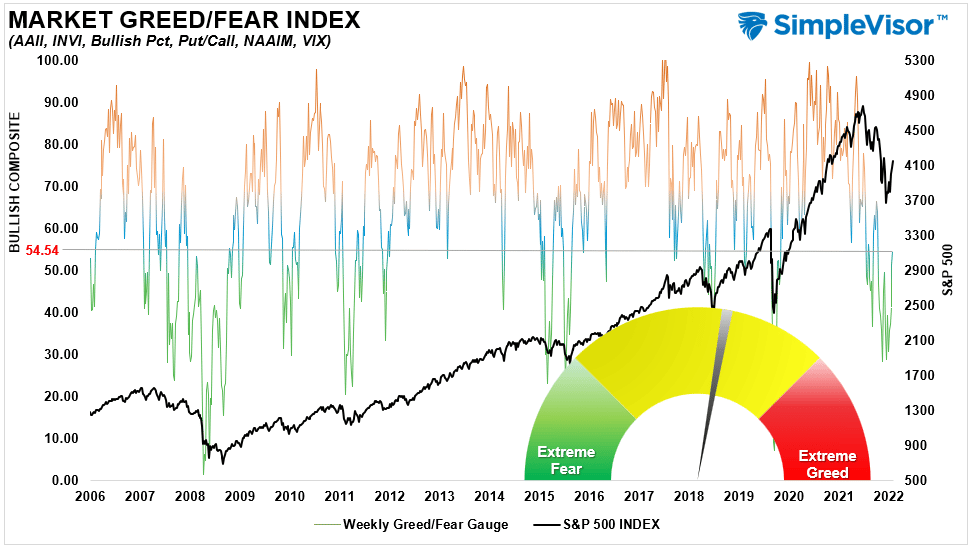
Sector Model Analysis & Risk Ranges
How To Read This Table
- The table compares the relative performance of each sector and market to the S&P 500 index.
- “M/A XVER” is determined by whether the short-term weekly moving average crosses positively or negatively with the long-term weekly moving average.
- The risk range is a function of the month-end closing price and the “beta” of the sector or market. (Ranges reset on the 1st of each month)
- The table shows the price deviation above and below the weekly moving averages.
The risk/range table resets at the first of each month, and Energy is in the buy zone for trading purposes. Energy is the only market or sector not in a bearish crossover of weekly moving averages outside the Dollar. Such suggests we remain in a more bearish technical backdrop and should get sold into rallies.
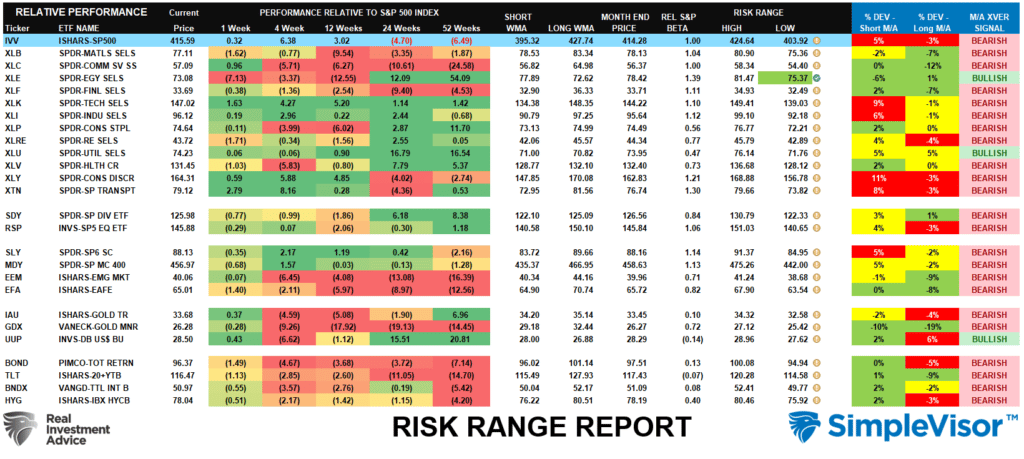
Weekly SimpleVisor Stock Screens
Each week we will provide three different stock screens generated from SimpleVisor: (RIAPro.net subscribers use your current credentials to log in.)
This week we are scanning for the Top 20:
- Relative Strength Stocks
- Momentum Stocks
- Technically Strong With Strong Fundamentals
These screens generate portfolio ideas and serve as the starting point for further research.
(Click Images To Enlarge)
RSI Screen
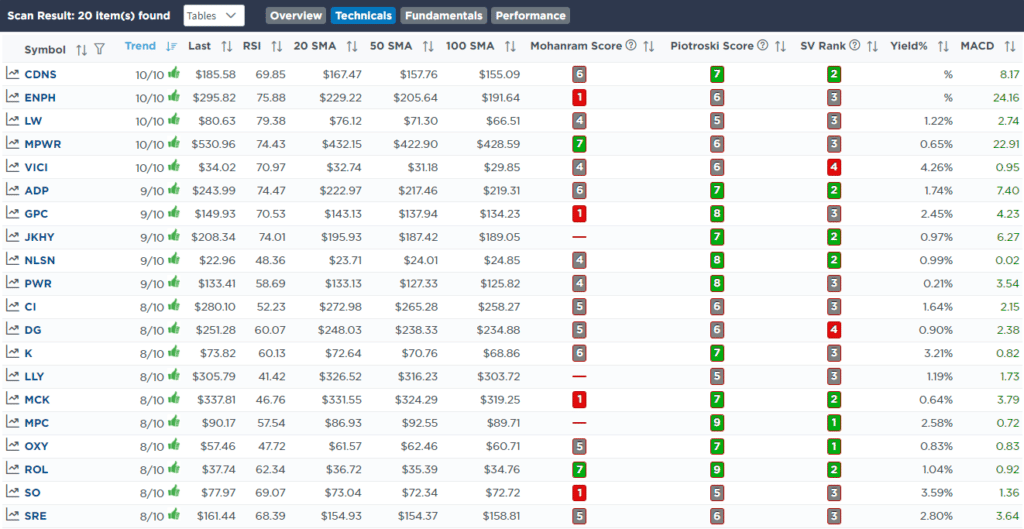
Momentum Screen
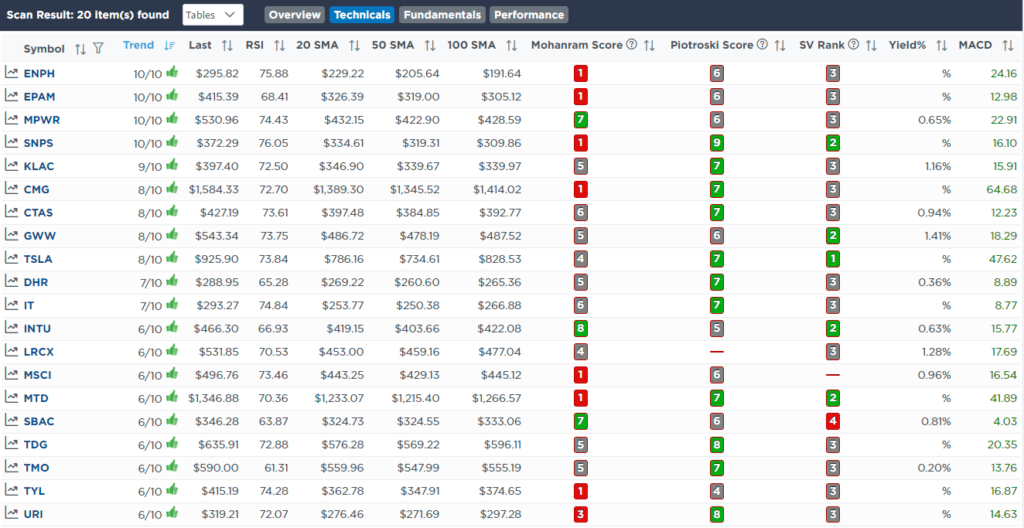
Technical & Fundamental Strength Screen
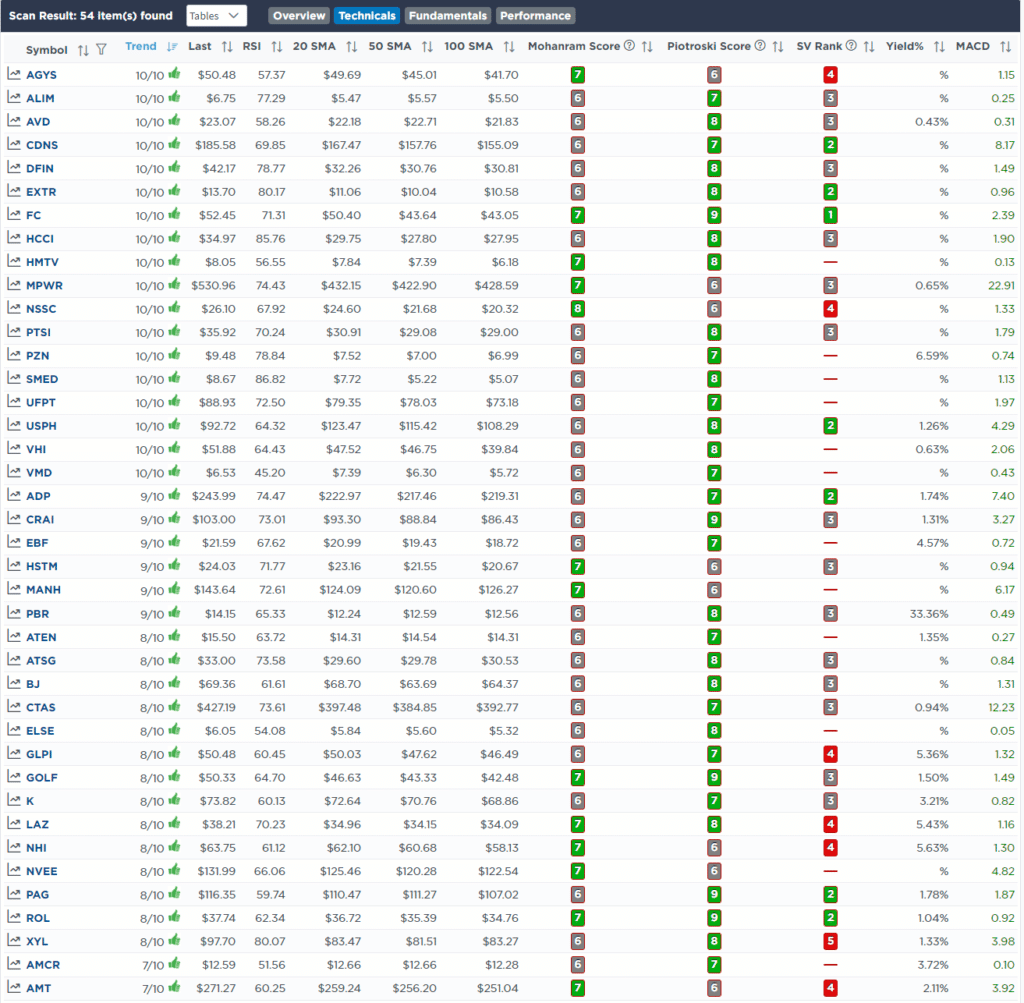
SimpleVisor Portfolio Changes
We post all of our portfolio changes as they occur at SimpleVisor:
Aug 1st
We sold .5% of Amazon (AMZN) even though we just added it a few days ago. The stock rose 12% on good earnings news on Friday and is sitting at an old level of support that may become resistance, as shown below.
- Sell 50% of AMZN
Aug 2nd
“In this morning’s Commentary, we wrote: “Overbought conditions are now pushing the highest level since the March peak, so profit taking is likely. What will be key to this rally is a pullback to the 50-dma that holds and works off the overbought condition. A failure of that level will lead to a retest of recent lows and a likely break to new ones. We took profits in our Amazon (AMZN) trade yesterday and will likely reduce risk a bit more here depending on today’s action.”
And that is exactly what we are doing this morning.”
Equity Model
- Sell .5% of AAPL
- Sell .5% of MSFT
Sector Model
- Sell .5% of XLK

Lance Roberts, CIO
Have a great week!





















